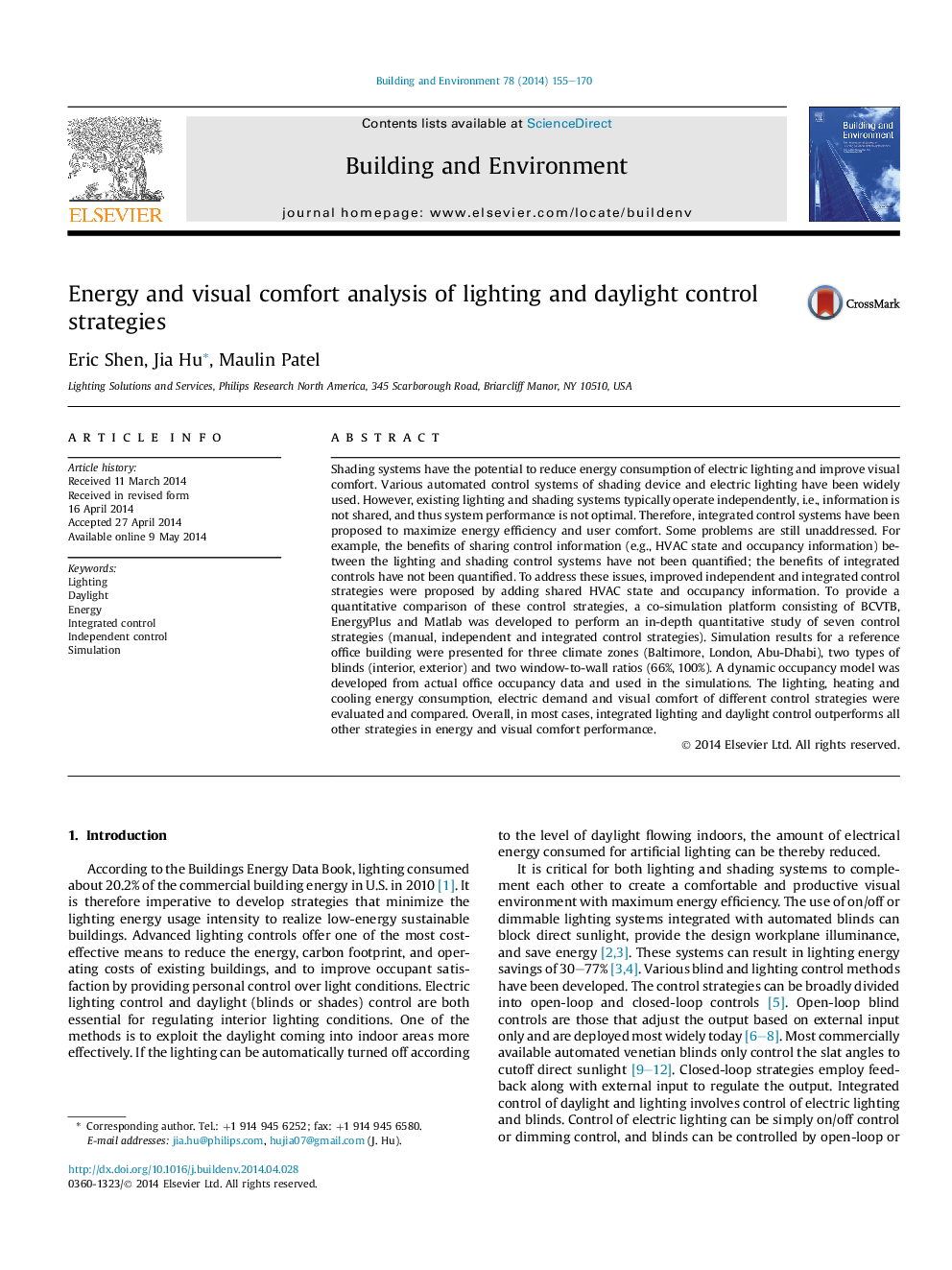| کد مقاله | کد نشریه | سال انتشار | مقاله انگلیسی | نسخه تمام متن |
|---|---|---|---|---|
| 248129 | 502547 | 2014 | 16 صفحه PDF | دانلود رایگان |
• Independent and integrated lighting and daylight control strategies were proposed.
• Energy and visual comfort performances of seven control strategies were compared.
• Integrated controls are linked to HVAC and occupancy state information.
• Integrated controls generally perform better than independent controls.
Shading systems have the potential to reduce energy consumption of electric lighting and improve visual comfort. Various automated control systems of shading device and electric lighting have been widely used. However, existing lighting and shading systems typically operate independently, i.e., information is not shared, and thus system performance is not optimal. Therefore, integrated control systems have been proposed to maximize energy efficiency and user comfort. Some problems are still unaddressed. For example, the benefits of sharing control information (e.g., HVAC state and occupancy information) between the lighting and shading control systems have not been quantified; the benefits of integrated controls have not been quantified. To address these issues, improved independent and integrated control strategies were proposed by adding shared HVAC state and occupancy information. To provide a quantitative comparison of these control strategies, a co-simulation platform consisting of BCVTB, EnergyPlus and Matlab was developed to perform an in-depth quantitative study of seven control strategies (manual, independent and integrated control strategies). Simulation results for a reference office building were presented for three climate zones (Baltimore, London, Abu-Dhabi), two types of blinds (interior, exterior) and two window-to-wall ratios (66%, 100%). A dynamic occupancy model was developed from actual office occupancy data and used in the simulations. The lighting, heating and cooling energy consumption, electric demand and visual comfort of different control strategies were evaluated and compared. Overall, in most cases, integrated lighting and daylight control outperforms all other strategies in energy and visual comfort performance.
Journal: Building and Environment - Volume 78, August 2014, Pages 155–170
